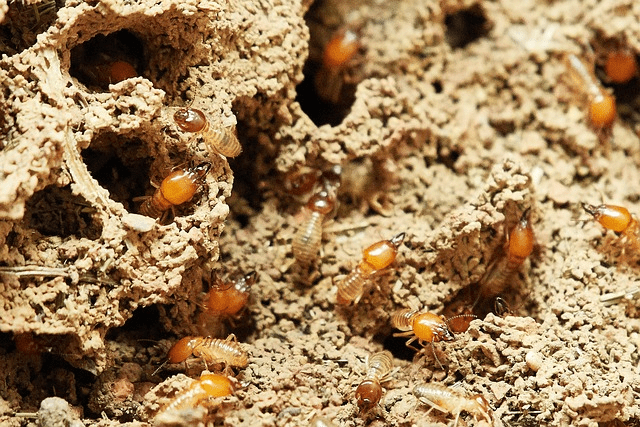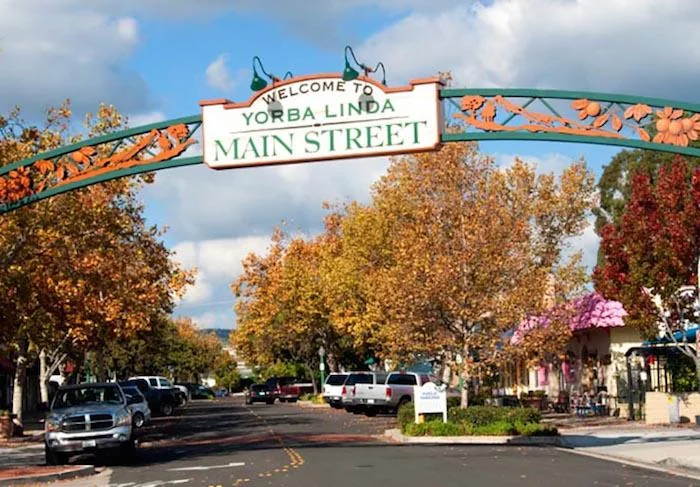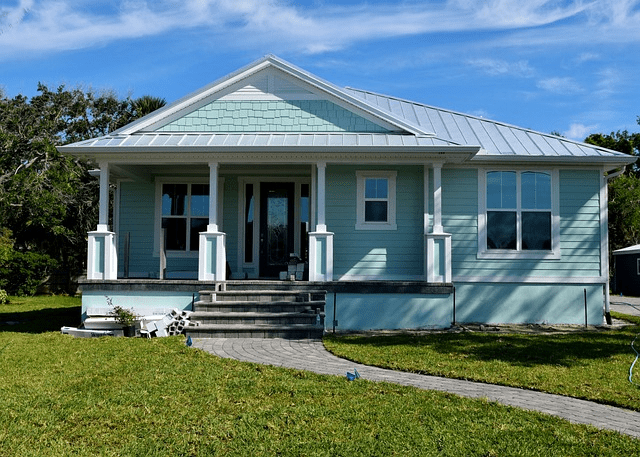Solved! What Do Termite Droppings Look Like, and Are They a Sign of an Infestation?

Q: I’m concerned my house has termites. How can I tell if what I found are termite droppings? Is it possible there are old termite droppings but no termites?
Yes it is possible the termite droppings you are seeing may be old, however there are numerous factors that make up both drywood termites and also subterranean termites, drywood termite droppings look like sand and you can tell by the color of the droppings weather they are new or old.
What Do Termites Droppings Look Like?
Termite droppings, often referred to as termite frass are a distinct indicator of a termite presence, particularly from drywood termites.
These droppings are small, pellet-like, measuring about 1mm in length, and are usually wood-colored.
Their most distinguishing feature is their shape: they are hexagonal, having six concave sides which differentiate them from the more rounded droppings of other pests.
Drywood termite droppings are small and oval-shaped, with six concave sides
Where You Will Find Termite Frass?
Termite frass is most commonly found near wooden structures affected by termites.
It might accumulate in piles near the nest’s kick-out holes where termites dispose of it.
Common locations include windowsills, doorframes, and baseboards.
Termite Poop of Different Termite Species
Drywood Termites: Their frass is the aforementioned hexagonal pellets.
Subterranean Termites: These termites use their droppings to build, so you won’t typically find visible droppings. Instead, look for mud tubes and damage.
Dampwood Termites: Less commonly affecting homes, dampwood termite droppings are also less likely to be found since they prefer very moist wood and their frass might blend into the damp environment.
Termite frass looks similar to piles of sawdust, which are another sign of termite infestation
Understanding Drywood Termite Frass and Infestations
Termite Frass
Termite frass, or termite droppings, is a clear sign of a termite infestation, particularly in cases involving drywood termites.
These droppings are expelled from the tunnels that termites create as they consume wood.
The appearance of frass is typically granular, resembling tiny wood-colored pellets.
Its distinct shape—hexagonal and concave on six sides—helps differentiate it from other pest excrement and debris like sawdust.
Termite Infestation
A termite infestation occurs when termites invade and begin consuming wooden structures within buildings. This can cause significant structural damage over time if not addressed.
Signs of infestation include the presence of frass, visible mud tubes (primarily from subterranean termites), hollowed-out wood, and in severe cases, sagging floors and walls.
Drywood termites, which produce noticeable frass, do not require contact with the soil and can infest areas higher up in buildings, making their detection somewhat more challenging without close inspection.
Termite Pellets
Termite pellets, another term for termite frass, are often the first visible sign of a drywood termite infestation.
These pellets are kicked out of the colonies through small holes.
The pellets’ consistent size and shape are telltale signs, distinguishing them from less uniform sawdust particles which might accumulate from other sources.
Drywood Termite
Drywood termites live and feed within wood, including hardwood floors, timber, and furniture.
Unlike subterranean termites, they do not require moisture from the soil and are capable of obtaining the moisture they need from the wood they consume.
This independence from soil contact allows them to infest a wider range of areas within a structure.
The control and elimination of drywood termites often require methods like fumigation or localized spot treatments since they may infest multiple areas within a building.
Termite Poop
Termite poop, or frass, is not just a nuisance but a signal flagging termite activity.
Despite being non-toxic and not harmful to humans or pets, its discovery should be taken seriously as it indicates ongoing damage to the wooden components of a structure.
Proper identification and response to the presence of termite poop can prevent minor infestations from becoming major financial and structural headaches.
How Old is the Termite Frass?
Determining the age of termite frass can be tricky without professional tools.
However, fresh frass is likely to be lighter in color and will darken as it ages. Continuous accumulation in a specific area often indicates active infestation.
Termite vs Carpenter Ant Droppings
Termite droppings are granular and hexagonal, while carpenter ant droppings are more irregular in shape and contain body parts of insects, which termites do not consume.
How To Determine If Termite Droppings Are Old Or Fresh
Fresh termite frass is typically lighter in color and may appear in new heaps despite recent cleaning.
Old droppings might seem more compacted and darker if subjected to moisture.
Subterranean termites typically don’t leave visible droppings
Areas You Are Likely To Find Termite Excrement
Look for termite excrement primarily around wooden structures, near cracks in the foundation, along subfloors, and near any wooden elements of your home like furniture.
Termite Droppings vs Sawdust
While termite frass can resemble sawdust, sawdust is usually more flaky and lacks the uniform shape of termite droppings.
Sawdust may also be a byproduct of other wood-damaging insects like carpenter ants or from general woodworking.
Subterranean Termite Frass
Understanding Subterranean Termite Infestations and Related Aspects
Subterranean Termite Infestations
Subterranean termites are the most common and economically significant termite species in many regions, especially in the United States.
Infestations occur when termites invade a structure to feed on wood, which can lead to severe structural damage.
Early detection and control are crucial, typically involving soil treatment, bait systems, and in severe cases, fumigation.
Termite Species
There are several key species of termites, each with different behaviors and treatment needs:
Subterranean Termites: Live in soil and are known for creating mud tubes. They are the most destructive species.
Drywood Termites: Infest dry wood and do not require contact with the soil.
They produce dry, wood-colored frass and are typically treated with fumigation or wood injections.
Dampwood Termites: Prefer moist wood and are often found in wood in contact with the ground or with a moisture source.
Formosan Termites: A highly aggressive and destructive form of subterranean termite, known for the large size of their colonies.
Termite Inspection
A termite inspection is a critical process for detecting the presence of termites before the damage becomes extensive.
During an inspection, a professional will check all accessible parts of a house for signs of termite activity and damage, such as mud tubes, damaged wood, frass, and live termites.
Inspections are crucial when buying a home or as a routine maintenance check to ensure early detection and management of potential termite problems.
Subterranean Termite Frass
Unlike drywood termites, subterranean termites do not typically leave behind visible frass.
Instead, they use their droppings mixed with saliva and soil to construct their mud tubes.
Therefore, the absence of frass does not mean subterranean termites are not present.
Mud tubes themselves are a key indicator of their presence and are usually found along the foundation or on exterior walls.
Identify Termite Droppings
Identifying termite droppings can help you determine if there is an active termite infestation:
Color and Texture: Termite droppings are usually wood-colored and pellet-shaped for drywood termites.
They resemble sawdust but are harder and less flaky.
Location: Check near wooden structures, along baseboards, window sills, and in attics. Subterranean termite droppings will be part of the mud used to build tubes.
Shape: Drywood termite frass is hexagonal, which helps distinguish it from other kinds of wood debris.
Are Termite Droppings Dangerous
While termite frass can resemble sawdust, sawdust is usually more flaky and lacks the uniform shape of termite droppings.
Sawdust may also be a byproduct of other wood-damaging insects like carpenter ants or from general woodworking.
Detailed Insights into Termite Colonies, Pest Control, and Related Aspects
Termite Colonies
Termite colonies are complex systems with a highly organized social structure.
These colonies are typically divided into three primary castes: workers, soldiers, and reproductive individuals (kings and queens).
The size of a colony can vary dramatically depending on the species and the environment, ranging from a few thousand to several million individuals.
Subterranean termites form some of the largest colonies, often creating extensive underground networks and mud tubes that allow them to access food sources above ground.
Finding Termite Droppings
Identifying termite droppings, or frass, is often the first sign of an infestation.
These droppings are distinct from other insect feces due to their uniform size and shape, resembling tiny, wood-colored pellets.
Finding these near wooden structures, particularly in piles, is a common indicator of drywood termite activity.
Termite Eggs
Termite eggs are small, white, and oval-shaped.
They are typically found deep within the nest, where the queen resides.
The presence of eggs in exposed wood or other accessible areas is rare and usually only seen during professional inspections of heavily infested structures.
Termite Wings
During certain times of the year, reproductive termites (also known as swarmers or alates) will leave the colony to start new colonies.
After swarming, these termites shed their wings. Finding discarded wings near windows, doors, or light sources can be a sign of an existing or potential new infestation.
Fecal Pellets
Fecal pellets, another term for termite droppings from drywood species, can provide clues about the location of their activity.
These pellets are often found beneath infested wood and are expelled from small holes created by the termites.
Ant Poop
Ant feces, or ant frass, is less granular than termite droppings and may include remnants of digested food, such as parts of insects or plant material.
Unlike termites, ants do not consume wood, so finding frass inside wood structures usually points to other pests.
Wooden Window Sills
Wooden window sills are common points of entry and damage for termites, particularly in older homes where wood may not have been treated to resist pests.
Regular inspections for signs of termite activity, such as mud tubes, frass, or hollowed-out wood, are essential in these areas.
What Do You Do If You Find Termite Droppings?
If you find what you suspect are termite droppings, it’s essential to contact a pest control professional immediately.
They can perform a thorough inspection, confirm the presence of termites, and recommend an appropriate course of treatment to prevent further damage.
What does it mean when you see termite droppings?
Seeing termite droppings inside your home almost always means that there is an active termite infestation.
Termites expel these droppings from their tunnels and out of their nests as they consume wood, which they continue to do unless treated.
Conclusion
The discovery of termite droppings in or around your home should prompt immediate action.
Identifying the type of termite involved and assessing the extent of the infestation are crucial steps in managing the threat effectively.
Always rely on professional pest control services to handle termite infestations, as DIY solutions are often ineffective at completely eradicating the problem and preventing future damage.



